Hello,
I Just recently Modded my CM690 by giving it a nice new paint job and also adding a side window however by adding the side window i have lost the option to add side fans (if a picture is needed of the new side with window i can add one) . The problem i am running into now is airflow and cooling. Nothing is overheating, my CPU after five runs with IBT (Intelburntest) does not reach a higher temperature than 65C. The GPU under stress in games like BF3 and GW2 never seems to get any higher than 65C either. However i feel even though these temperatures are not extremely high i can do a lot better especially seeing as nothing in my pc is OC'ed. I also feel that a big contributor to the temps i am receiving is my fan layout.
I Currently have 5x 120MM fans in my case. However, as far as i know they all different which i know is not good. I have been doing a lot of reading about different types of airflow things like negative and positive pressures and which is best for cooling purposes. From what i have gathered it seems you want to try to balance it out but lean a little in negatives favor by making your exhaust slightly stronger than your intake. I am still having trouble understanding the things like CFM's and RPM's i understand the basic concept of the two but what i don't know is for example do you want all your exhaust fans to have a high CFM and your intake to be slightly lower?
Below is a picture of my case i have marked each fan with a number and i will explain my idea behind each one and why i put it in that position.

Fan #1: This is an old power supply fan it is very loud however it seems to move the most air out of all the fans i have.
Fan #2: This came with the case it has not been moved and is still in it's original spot. It feel like it moves little to no air and i put it there just to help a little with intake but it seems pointless considering it is blocked by the hard drive bays.
Fan #3: This fan moves a lot of air my idea for putting this there was to intake cool air through the front of the case and create a constant stream of air between Fans #: 3, 4 and 5
Fan# 4: stock Intake fan on heatsink.
Fan# 5: If i'm not mistaken this is the 2nd fan that came with the hyper 212+ for the push pull setup but i'm using it as an exhaust.
So there is my plane crash =] It would be greatly appreciated if you guys can help me out maybe give some input and recommendations because as you can see i have no idea what the hell i'm doing lol. On a side note i am ok with purchasing more fans but i do not want to go insane and spend 150-200 dollars on fans if that is the case i would rather hold out for a bit save up and maybe get a nice water cooling kit around the holidays.
Thanks in advance.
Wow apparently not only do I fail at cooling but counting as well. I forgot #4 in pic above and there is no #6
I Just recently Modded my CM690 by giving it a nice new paint job and also adding a side window however by adding the side window i have lost the option to add side fans (if a picture is needed of the new side with window i can add one) . The problem i am running into now is airflow and cooling. Nothing is overheating, my CPU after five runs with IBT (Intelburntest) does not reach a higher temperature than 65C. The GPU under stress in games like BF3 and GW2 never seems to get any higher than 65C either. However i feel even though these temperatures are not extremely high i can do a lot better especially seeing as nothing in my pc is OC'ed. I also feel that a big contributor to the temps i am receiving is my fan layout.
I Currently have 5x 120MM fans in my case. However, as far as i know they all different which i know is not good. I have been doing a lot of reading about different types of airflow things like negative and positive pressures and which is best for cooling purposes. From what i have gathered it seems you want to try to balance it out but lean a little in negatives favor by making your exhaust slightly stronger than your intake. I am still having trouble understanding the things like CFM's and RPM's i understand the basic concept of the two but what i don't know is for example do you want all your exhaust fans to have a high CFM and your intake to be slightly lower?
Below is a picture of my case i have marked each fan with a number and i will explain my idea behind each one and why i put it in that position.

Fan #1: This is an old power supply fan it is very loud however it seems to move the most air out of all the fans i have.
Fan #2: This came with the case it has not been moved and is still in it's original spot. It feel like it moves little to no air and i put it there just to help a little with intake but it seems pointless considering it is blocked by the hard drive bays.
Fan #3: This fan moves a lot of air my idea for putting this there was to intake cool air through the front of the case and create a constant stream of air between Fans #: 3, 4 and 5
Fan# 4: stock Intake fan on heatsink.
Fan# 5: If i'm not mistaken this is the 2nd fan that came with the hyper 212+ for the push pull setup but i'm using it as an exhaust.
So there is my plane crash =] It would be greatly appreciated if you guys can help me out maybe give some input and recommendations because as you can see i have no idea what the hell i'm doing lol. On a side note i am ok with purchasing more fans but i do not want to go insane and spend 150-200 dollars on fans if that is the case i would rather hold out for a bit save up and maybe get a nice water cooling kit around the holidays.
Thanks in advance.
Wow apparently not only do I fail at cooling but counting as well. I forgot #4 in pic above and there is no #6
Last edited:
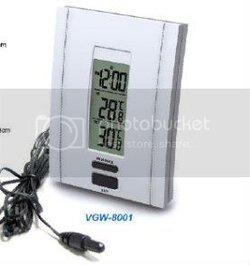

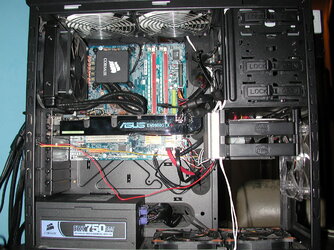
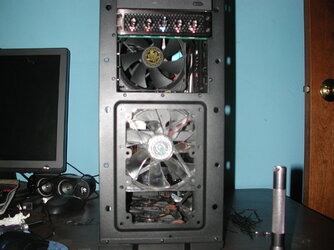
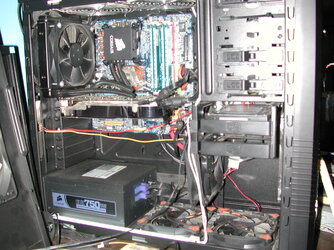
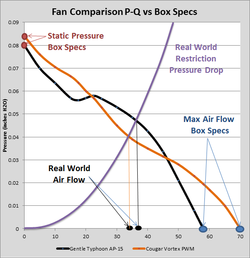
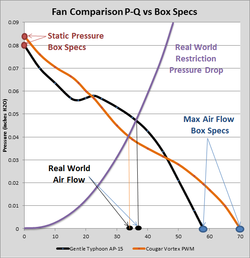
 You are correct.
You are correct.